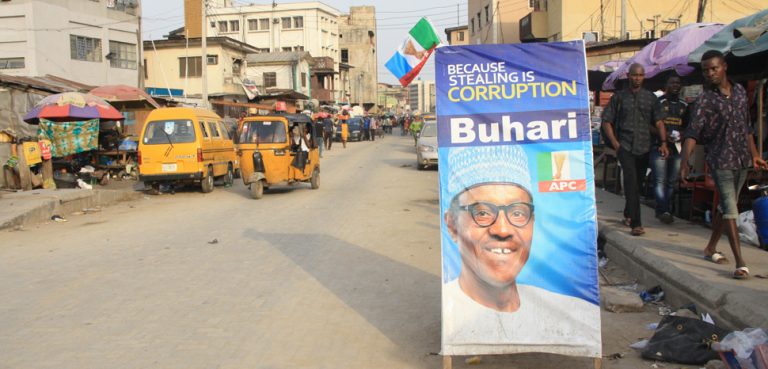The Colombian government is eager to expand and diversify the country’s mining industry by exploiting critical minerals, including nickel, which is currently solely mined in Cerro Matoso. As global demand for this critical mineral reminds high, nickel can be very profitable for Colombia’s mining industry and economy; however, we cannot overlook issues related to nickel mining, including environmental destruction and health problems for workers and local inhabitants. Even violence has become commonplace around Cerro Matoso.
Colombia’s Nickel
Colombia’s nickel mining operations are centered in the Cerro Matoso mine, Cordoba department, which has around two thousand workers and started production in 1982. “The total reserves in the mine amount to slightly below 300 kilotons of nickel. It is one of the world’s largest open-pit ferronickel mines. In 2023, the mine is expected to produce 43.5 kilotons of nickel, 4% up from 2022 levels of 41.7 kilotons,” according to a late December 2022 report. Similarly, in a September 2022 interview for El Colombiano, Ricardo Gaviria, president of Cerro Matoso, explained that the mine expected to produce more than 41,000 tons of nickel in 2022 and expects to surpass 45,000 tons in 2023. Colombia has the tenth-largest nickel reserves in the world.
The economist Tomás González, a former minister and current director of Colombia’s Regional Center for Energy Studies (Centro Regional de Estudios de Energía: CREE), explained to the Colombian department La Razon the importance of Cordoba department, where Cerro Matoso is located, for Colombia’s energy transition:
Nickel is one of the fundamental minerals for the [global energy] transition, all these systems that will be required to produce low-emission energy … nickel [will be needed to manufacture them], and nickel is in Cordoba, and we have to think about it, not just about gas but also strategic minerals for the [energy] transition.
The Future of Nickel Mining in Colombia
The Colombian government wants to create as many as 30 new mining areas nationwide. For example, regarding the Santander department, news reports suggest that gold could be mined there. The Petro administration has developed a National Development Plan (Plan Nacional de Desarrollo: PND), which includes objectives and strategies for Colombia’s Ministry of Mining and Energy (Ministerio de Energia y Minas). According to the Colombian daily El Colombiano, the plan declares that the country’s mining policy “will be updated with an emphasis on the use and management of mechanisms for environmental mining management” and will also promote and prioritize the “exploration, extraction and formal commercialization of strategic minerals such as copper, nickel, cobalt and lithium among others.
In other words, nickel is very much in the mind of Bogota. In fact, nickel is on the Colombian government’s list of strategic minerals. According to the Colombian media, Bogota plans to issue a new Mining Law (Ley Minera) to support small and medium mining enterprises, focusing on the exploitation of critical minerals, including nickel.
Entities like the American-Colombian Chamber of Commerce (Camara de Comercio Colombo-Americana) support nickel mining. In a press release issued just this past 30 May, the Chamber argued that the US’s 2022 Inflation Reduction Act, which promotes green technologies to combat climate change, can boost Colombia’s mining of copper and nickel. The Chamber also noted that US demand for nickel is growing, and Colombia currently ranks as the US’s 28th largest supplier of nickel. New nickel mines across Colombia would undoubtedly mean that supplies to the US will increase, given the close bilateral ties between the countries, including the Free Trade Agreement (FTA) between the two countries. “Colombia is already a small nickel producer and could shift its ferronickel production to nickel sulfate, used in electric vehicle (EV) batteries.”
In response to a query about where else nickel can be found in the South American country since Cerro Matoso is the only mine that produces nickel, the mine’s president Gaviria is optimistic. “With the policy of total peace by President Gustavo Petro, we hope to start developing exploration work in [other areas] of the country that today are very complex due to public order issues, such as Tarazá and Ituango (Antioquia), as well as in the north of Nariño and south of Cauca… there is still nickel to extract across the country,” he concluded.
Regarding the future of nickel mines in the Cordoba department, the Colombia daily El Tiempo noted this past 24 April that there are three deposits in Cordoba (Cerro Matoso, Planeta Rica, and Uré) and three in Antioquia department (Ituango, Pelon, and Medellin). Cerro Matoso’s Gaviria noted: “We are carrying out some prospecting studies in areas close to the Queresas and Provenir projects since the … mineral has been found. We are carrying out final analyses, but there are sufficient resources for possible production.” On the other hand, he noted that the San José de Uré project was discarded “since the level of prospecting was not enough to invest in extracting nickel.” The mine’s senior official confirmed that Cerro Matoso will follow the mine owner South32’s objective to promote an environmentally sustainable mining operation and reduce the operation’s carbon footprint by more than 50% by 2030.
While Cerro Matoso is profitable, the mine is often the target for criticism for several reasons.
Wealth and Death in Cerro Matos
We will now discuss the impact of the Cerro Matoso mine in Montelíbano municipality, Córdoba. “If Montelíbano is known for one thing, it’s the Cerro Matoso mine… along the route into town, trucks squeeze by each other on narrow roads, transporting ferronickel to the port city of Cartagena. From here, nickel is shipped off to China, the United States, and Europe, where it is used to produce stainless steel products,” explains an analysis by Spanish daily El Pais.
While Cerro Matoso is vital for the country’s nickel industry, a source of employment and income, the mine “has been decried by community members, journalists, and activist groups for its negative health and environmental impacts on neighboring communities… Cerro Matoso takes up nearly 85 hectares of land in the middle of an indigenous reserve belonging to the Zenu de l’Alto San Jorge people. Several indigenous communities surround the mine, including one village — Puerto Colombia — which is situated just 750 meters from the mine.” Living next to the mine has caused severe health problems for inhabitants.
The mining company has denied all accusations regarding air pollution. However, local inhabitants and mine employees are reportedly getting sick, “a lot of gases are released during these operations…They contain substances that are often carcinogenic, including cancerous crystalline silica,” said Victor Pineda, a former mine employee. The mine’s owner, South32, has fought court cases against the alleged destruction and pollution caused by the Cerro Matoso mine. Colombia’s Externado University has analyzed one of these legal cases against the company.
Moreover, there are accusations that the mine pays the Gulf Clan (Cartel del Golfo) to be allowed to operate, and, in turn, the paramilitaries threaten, hurt, and even kill individuals who protest the mine’s operations. Case in point, the Colombian journalist Rafael Moreno was murdered in October 2022, reportedly for his journalistic work into corruption in Cordoba department, including the Cerro Matoso mine. So far, his case is unresolved.
Conclusions
Colombia is focused on exploiting its mineral resources during the Petro administration. The government’s new development plan and proposed mining law demonstrate that mining across the country will grow in the coming years. Currently, only the Cerro Matoso mine in Cordoba mines nickel in the South American country, but prospecting is underway for new deposits. Colombia can undoubtedly profit from more nickel mines, and the United States, a close ally, will certainly be a willing importer of this critical mineral; however, we must not forget environmental destruction, impact on human health, and even violence related to nickel mining.
Wilder Alejandro Sánchez is president of Second Floor Strategies, a consulting firm in Washington, DC. He is an analyst that monitors defense & security, geopolitical, and trade issues across the Western Hemisphere, Eastern Europe, and Central Asia.
The views expressed in this article belong to the authors alone and do not necessarily reflect those of Geopoliticalmonitor.com.




